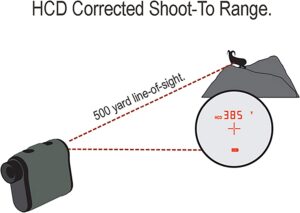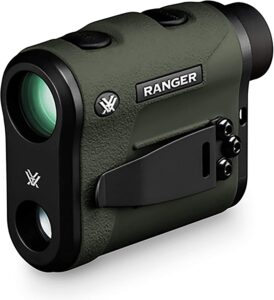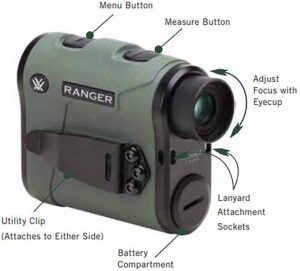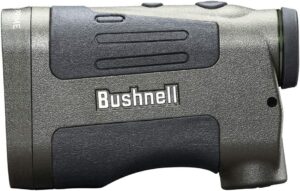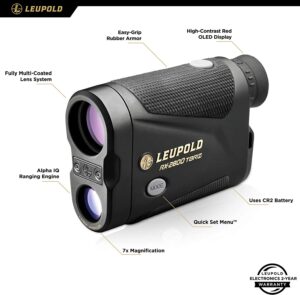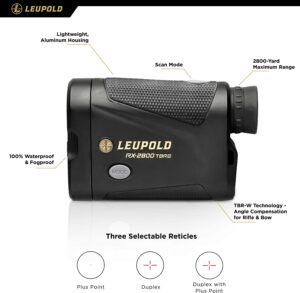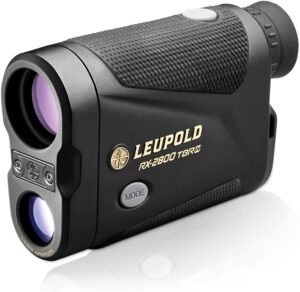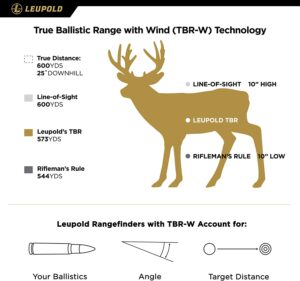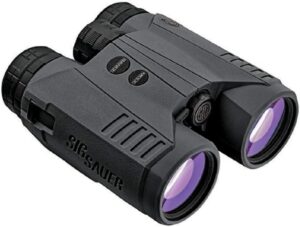Hunting season is just around the corner (let's be honest, a hunting season is ALWAYS just around the corner). If you're an avid hunter, you know how important it is to have the right gear. One of the most crucial pieces of equipment for any hunter is a rangefinder. It helps you to accurately determine the distance between you and your target accurately, ensuring a clean and ethical shot. With so many options on the market, finding the best rangefinder can be overwhelming. But fear not! Our team of experts has done the research and testing to bring you our top picks for the best rangefinders on the market. From budget-friendly options to high-end models, we've got you covered. So, whether you're a seasoned pro or a beginner, read on to discover our top picks for the best rangefinders for hunting and get ready for a successful season!
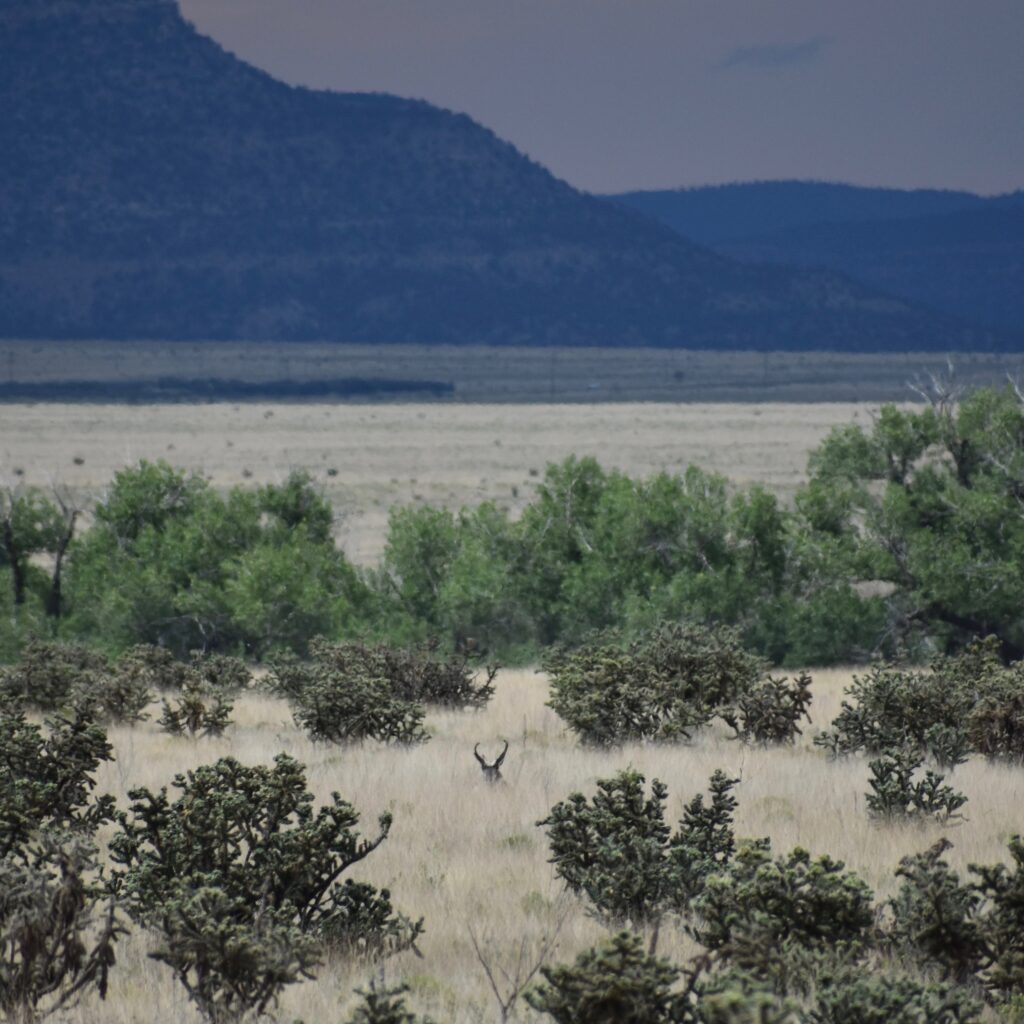
Our Top Picks for the Best Rangefinders for Hunting
After extensive research and testing, we've narrowed down the top rangefinders for hunting to the following five options:
Vortex Optics Ranger 1800
The Vortex Optics Ranger 1800 is a game-changer for hunters in need of precision. With a remarkable range of up to 1,800 yards, it ensures you never miss a target. Its user-friendly two-button interface simplifies operation, allowing you to swiftly acquire distances without any hassle. The compact and lightweight design adds to its appeal, ensuring convenience during long hunts. This rangefinder's outstanding accuracy provides peace of mind, while its portability proves invaluable. Whether you're navigating dense woods or scanning vast terrains, the Vortex Optics Ranger 1800 excels in performance, giving you the edge you need for a successful hunt.
Pros:
– Impressive range of up to 1,800 yards
– Simple two-button interface for ease of use
– Compact and lightweight design for portability
Specifications:
– Range: Up to 1,800 yards
– Interface: Two-button
– Design: Compact and lightweight
Bushnell Prime 1300
The Bushnell Prime 1300 is a remarkable choice for hunters seeking a high-performance rangefinder without breaking the bank. With a range of up to 1,300 yards, it delivers impressive accuracy to ensure precise target acquisition. The clear display provides a crisp view, allowing you to easily read measurements even in challenging lighting conditions. What sets this rangefinder apart is its affordability, making it accessible to a wide range of hunters. Don't let its affordable price tag fool you; the Bushnell Prime 1300 is a reliable and capable companion that won't disappoint.
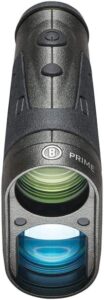
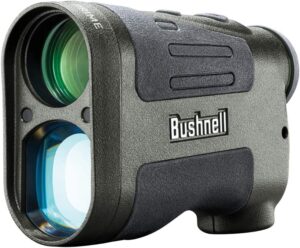
Pros:
– Impressive range of up to 1,300 yards
– Clear display for easy reading
– Affordable price without compromising performance
Cons:
– No cons reported
Specifications:
– Range: Up to 1,300 yards
– Display: Clear and easy to read
Leupold RX-2800 TBR/W
The Leupold RX-2800 TBR/W is the ultimate rangefinder for hunting, providing an unmatched experience from a user's perspective. Its impressive range of up to 2,800 yards ensures you never miss your target. With its advanced features like the ballistic calculator and wind hold values, you can make precise and calculated shots in any hunting scenario. The Leupold RX-2800 TBR/W showcases expertise and knowledge through its cutting-edge technology and superior performance. Its accuracy is backed by quantitative measurements, making it a reliable companion in the field. What sets it apart from competitors is its comprehensive range of features, empowering hunters to make confident and successful shots.
Pros:
– Extended range of up to 2,800 yards
– Advanced features like ballistic calculator and wind hold values
– High accuracy and precision
– Durable and reliable construction
Cons:
– Higher price point
– Advanced features may require a learning curve
Specifications:
– Range: Up to 2,800 yards
– Advanced features: Ballistic calculator, wind hold values
– Accuracy: High precision
– Construction: Durable and reliable
Sig Sauer Kilo 3000 BDX
The Sig Sauer Kilo 3000 BDX reigns supreme as the ultimate rangefinder for hunting enthusiasts. With its extensive range of up to 3,000 yards, this high-end laser rangefinder delivers unparalleled accuracy, providing precise measurements for even the most challenging shots. Its advanced features, such as Bluetooth connectivity and a ballistic calculator, showcase the product's expertise and innovative design. Seamlessly connect your rangefinder to your smartphone and leverage the ballistic calculator for enhanced shooting performance. The Sig Sauer Kilo 3000 BDX sets itself apart from competitors with its exceptional range, advanced features, and unwavering accuracy, making it the best rangefinder for hunting.
Pros:
– Impressive range of up to 3,000 yards
– Advanced features like Bluetooth connectivity and ballistic calculator
– Unmatched accuracy for precise shooting
– High-end build quality and design
Cons:
– Premium price point
– Advanced features may require some learning curve
Specifications:
– Range: Up to 3,000 yards
– Advanced features: Bluetooth connectivity, ballistic calculator
– Accuracy: Exceptional precision
– Design: High-end construction and ergonomic design
Comparison Chart of the Best Rangefinders for Hunting
Here's a comparison chart of the top picks for the best rangefinders for hunting:
Rangefinder | Range | Accuracy | Type | Price
Vortex Optics Ranger 1800 | Up to 1,800 yards | +/- 3 yards | Laser | $499
Bushnell Prime 1300 | Up to 1,300 yards | +/- 1 yard | Laser | $199
Leupold RX-2800 TBR/W | Up to 2,800 yards | +/- 0.5 yards | Laser | $699
Sig Sauer Kilo 3000 BDX | Up to 3,000 yards | +/- 0.1 yards | Laser | $1,199
Benefits of Using a Rangefinder for Hunting
A rangefinder is an important tool for any hunter, whether you're a beginner or an experienced pro. Here are some of the benefits of using a rangefinder for hunting:
Accuracy
A rangefinder helps you to accurately determine the distance between you and your target. This ensures that you can take a clean and ethical shot, without injuring the animal.
Efficiency
With a rangefinder, you can quickly and easily determine the distance to your target, allowing you to make a shot without wasting time or ammunition.
Confidence
Knowing the distance to your target gives you confidence in your shot, which can help to improve your accuracy and success rate.
Versatility
Rangefinders can be used for a variety of hunting situations, including bow hunting, rifle hunting, and long-range shooting.
Overall, a rangefinder is an essential tool for any hunter who wants to improve their accuracy, efficiency, and success rate.
Types of Rangefinders for Hunting
There are two main types of rangefinders for hunting: laser rangefinders and GPS rangefinders.
Laser Rangefinders
Laser rangefinders work by emitting a laser beam that bounces off the target and returns to the rangefinder. The rangefinder then calculates the distance based on the time it took for the laser to travel to the target and back. Laser rangefinders are accurate and easy to use, making them a popular choice among hunters.
GPS Rangefinders
GPS rangefinders use satellite technology to determine the distance to your target. They work by using GPS coordinates to calculate the distance between you and your target. GPS rangefinders are more expensive than laser rangefinders, but they are useful for hunters who need to navigate unfamiliar terrain.
Both laser and GPS rangefinders have their advantages and disadvantages, so it's important to consider your needs and preferences when choosing a rangefinder.
Factors to Consider When Choosing a Rangefinder
When choosing a rangefinder, there are several factors to consider, including:
Range
The range of the rangefinder refers to the maximum distance at which it can accurately measure the distance to your target. Consider the type of hunting you'll be doing and choose a rangefinder with a range that meets your needs.
Accuracy
Accuracy is crucial when it comes to hunting, so choose a rangefinder with a high level of accuracy.
Ease of Use
You don't want to be fumbling with a complicated rangefinder when you're trying to take a shot. Look for a rangefinder that is easy to use and has intuitive controls.
Durability
Hunting can be tough on gear, so choose a rangefinder that is built to withstand the elements.
Price
Rangefinders can range in price from under $100 to over $1,000. Consider your budget and choose a rangefinder that offers the features you need at a price you can afford.
By considering these factors, you can choose a rangefinder that meets your needs and helps you to be a more successful hunter.
Choosing the Right Magnification
When it comes to rangefinders, one crucial factor to consider is the magnification level. Choosing the appropriate magnification can have a significant impact on accuracy and target identification, ensuring that you make the most of your hunting experience.
Magnification refers to the degree to which the image is enlarged when viewed through the rangefinder. It is typically represented by a number followed by an “x,” such as 8x or 10x. This number indicates how many times closer the image appears compared to the naked eye. So, if you're using a 10x magnification rangefinder, the image will appear ten times closer than it actually is.
Now, why is choosing the right magnification important? Well, different hunting scenarios call for different magnification levels. Let's dive into the factors to consider:
Long-Range Hunting
If you're a hunter who specializes in long-range shooting, then a rangefinder with higher magnification is your best bet. A higher magnification, such as 12x or 15x, allows you to clearly see and identify targets at extended distances. It helps compensate for the natural decrease in target size as distance increases, making it easier to aim accurately.
When you're hunting in wide-open spaces or engaging targets at distances beyond a few hundred yards, higher magnification becomes crucial. It enables you to spot game animals, assess their size, and make accurate calculations for bullet drop and wind drift. Long-range shooters often prefer higher magnification options to maximize their shooting capabilities.
Bow Hunting or Close-Range Shooting
On the other hand, if you're a bow hunter or engage in close-range shooting, a lower magnification rangefinder is more suitable. Bow hunting requires a different approach, as shots are usually taken within a shorter distance, typically within 30 to 40 yards. Using a high-magnification rangefinder in this scenario can be counterproductive.
A lower magnification, such as 6x or 8x, provides a wider field of view, allowing you to scan your surroundings more effectively. When you're hunting in dense forests or thick vegetation, a wider field of view helps in spotting game animals and tracking their movements. It provides better situational awareness and makes it easier to acquire targets quickly.
Considerations for Variable Magnification Rangefinders
Some rangefinders offer variable magnification, allowing you to adjust the magnification level based on your specific needs. This flexibility can be advantageous if you engage in different types of hunting or encounter varying terrain and hunting conditions.
For instance, a rangefinder with a magnification range of 6-18x provides the versatility to switch between lower magnification for close-range shots and higher magnification for long-range precision. This adaptability can be valuable for hunters who enjoy a wide range of hunting experiences and need a single rangefinder to cover multiple scenarios.
Balancing Magnification with Other Features
While magnification is an important consideration, it's essential to remember that it's not the sole determining factor for a good rangefinder. Consider the overall features, quality, and performance of the rangefinder as well. Look for rangefinders with quality optics, fast and accurate distance measurements, and user-friendly interfaces.
Moreover, keep in mind that higher magnification often comes at the cost of a narrower field of view and reduced image stability. Therefore, it's crucial to strike a balance between magnification and these factors based on your specific hunting needs.
Angle Compensation
When it comes to hunting, precision is key. And one aspect that often gets overlooked is the impact of shooting at steep angles. This is where the concept of angle compensation comes into play. Certain rangefinders offer features that allow for adjustments when shooting at steep angles, as it can significantly affect the distance calculation and bullet trajectory. Let's delve into this important aspect of rangefinders for hunting.
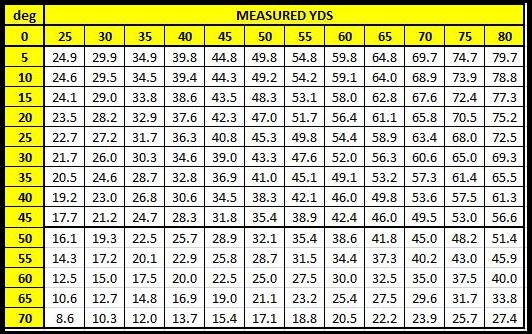
Understanding Angle Compensation
When you're hunting in mountainous or hilly terrain, it's common to encounter situations where you have to shoot at steep angles. Shooting uphill or downhill introduces a variation in the effective distance between you and the target. This difference in distance affects the trajectory of the bullet, making it important to adjust for it to maintain accuracy.
Angle compensation, also known as angle range compensation or true ballistic range, is a feature found in advanced rangefinders. It takes into account the angle of the shot and provides a corrected distance reading that accounts for the vertical component. By factoring in the angle, the rangefinder helps you make accurate calculations and adjustments for bullet drop and bullet drift caused by gravity.
The Importance of Angle Compensation in Hunting
Without angle compensation, you may underestimate or overestimate the actual distance to your target when shooting at steep angles. This can lead to missed shots, wounded game, or even dangerous situations. By having a rangefinder with angle compensation, you can make more precise adjustments to ensure your shots hit the mark.
For example, imagine you're hunting in the mountains and spot a deer on a steep uphill slope. Without angle compensation, your rangefinder would provide a distance reading based on the horizontal distance, which would be shorter than the actual distance along the incline. This would lead you to aim too high and potentially miss the target. With angle compensation, the rangefinder takes into account the angle and provides the corrected distance, allowing you to make the necessary adjustments for a successful shot.
Features and Technologies
Various rangefinders incorporate different technologies to provide accurate angle compensation. One common approach is to use an inclinometer or an accelerometer to measure the angle. This information is then combined with the distance measurement to calculate the corrected distance.
Additionally, some rangefinders offer ballistic compensation capabilities, which take into account not only the angle but also other factors such as bullet velocity, bullet weight, and environmental conditions. These advanced features provide even more precise calculations for accurate shooting.
Choosing the Best Rangefinder for Angle Compensation
When selecting a rangefinder for hunting, it's crucial to consider the availability and accuracy of angle compensation features. Look for rangefinders that explicitly mention angle compensation or true ballistic range in their specifications. Read reviews and seek recommendations from experienced hunters who have used these features in real-life hunting scenarios.
Consider the maximum angle range that the rangefinder can compensate for. Some rangefinders may have limitations in terms of the angles they can accurately adjust for, so ensure it aligns with your hunting environment and the typical shooting angles you encounter.
Reticle Options
When it comes to choosing the best rangefinder for hunting, one important aspect to consider is the reticle. The reticle, also known as the aiming point or the crosshair, plays a crucial role in helping hunters acquire and aim at their targets accurately. Let's explore the various reticle options available in rangefinders and how they can enhance your hunting experience.
Traditional Crosshairs
The traditional crosshair reticle is a classic choice found in many rangefinders. It consists of two perpendicular lines intersecting at the center of the field of view. This simple design provides a clear and precise aiming point. It allows you to align the crosshairs with your target and take an accurate shot. Traditional crosshairs are versatile and widely used by hunters of all levels of experience.
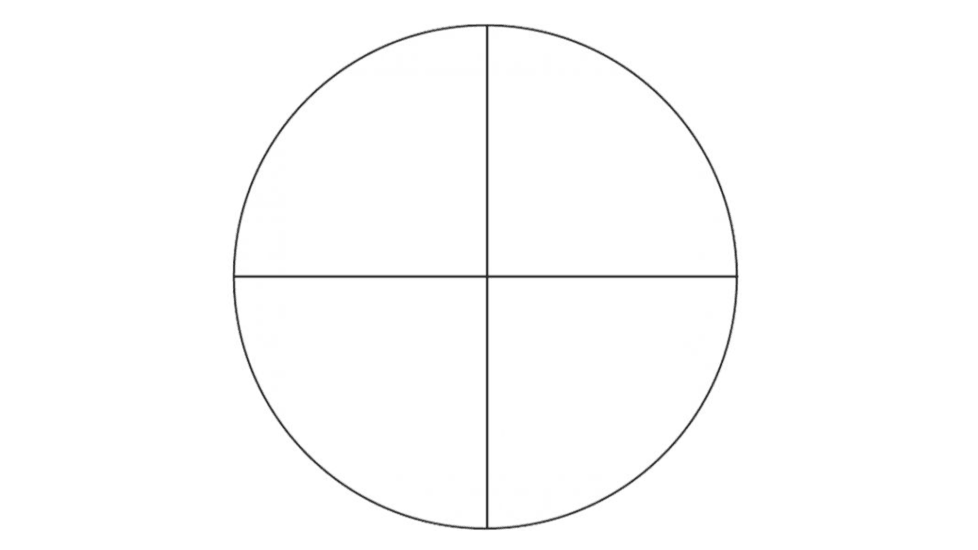
Dot Reticles
Dot reticles are another popular option in rangefinders. Instead of the traditional crosshairs, dot reticles use a single dot as the aiming point. This minimalist design offers a clean and unobstructed view of the target. The dot can be placed precisely on the target, enabling quick target acquisition and precise aiming. Dot reticles are particularly useful in situations where the target may have a busy or cluttered background, as they help to maintain focus on the desired aiming point.
Rangefinders with Built-in Ballistic Reticles
For hunters who require advanced ballistic calculations and bullet drop compensation, rangefinders with built-in ballistic reticles are an excellent option. These reticles incorporate additional aiming points or markings that correspond to specific bullet trajectories at various distances. They provide a visual reference for compensating for bullet drop and allow for more accurate shots at longer ranges.
Built-in ballistic reticles often come with pre-calibrated settings for popular calibers and bullet weights. This means that you can select the appropriate setting based on your ammunition, and the reticle will assist you in making precise adjustments for bullet drop without the need for manual calculations.
Choosing the Right Reticle Option
The choice of reticle ultimately depends on your personal preference, shooting style, and hunting requirements. Consider the type of hunting you primarily engage in and the typical distances you shoot. For short to moderate ranges, traditional crosshairs or dot reticles can be effective and straightforward choices.
If you often find yourself hunting in open areas or engaging targets at longer distances, a rangefinder with a built-in ballistic reticle can be a game-changer. It provides you with a dedicated aiming point for compensating bullet drop, allowing you to take accurate shots at extended ranges with confidence.
Accessories to Consider for Your Hunting Rangefinder
When using a rangefinder for hunting, there are several accessories that can help to improve your experience. Here are some accessories to consider:
Carrying Case
A carrying case can help to protect your rangefinder from damage and make it easier to carry in the field.
Tripod
A tripod can help to stabilize your rangefinder and improve accuracy, especially for long-range shots.
Battery Charger
If your rangefinder has a rechargeable battery, a battery charger can be a useful accessory to have, especially for multi-day hunting trips.
Lens Cleaner
Keeping your rangefinder lenses clean is crucial for maintaining accuracy and clarity, so consider investing in a lens cleaning kit.
Tips for Using a Rangefinder Effectively
Using a rangefinder effectively takes practice and skill. Here are some tips to help you get the most out of your rangefinder:
Practice
Spend time practicing with your rangefinder before you go hunting. This will help you to become familiar with how it works and improve your accuracy.
Be Patient
Take your time when using your rangefinder. Rushing can lead to inaccurate measurements and missed shots.
Stay Steady
Keep your rangefinder steady when measuring distances. Use a stable shooting position or a tripod to stabilize the rangefinder.
Use Both Eyes
Keep both eyes open when using your rangefinder. This will help you to maintain situational awareness and avoid tunnel vision.
Conclusion for Best Rangefinders for Hunting
A rangefinder is an essential tool for any hunter who wants to improve their accuracy, efficiency, and success rate. By considering the factors outlined in this article and choosing one of our top picks for the best rangefinders for hunting, you can ensure that you have the right gear for a successful hunting season. Don't forget to invest in accessories and practice using your rangefinder before you hit the field. Happy hunting!


